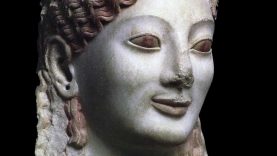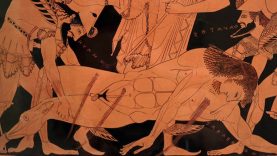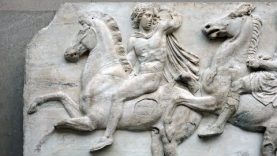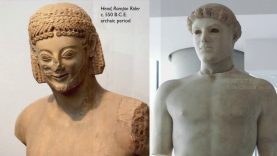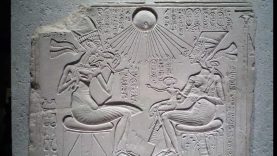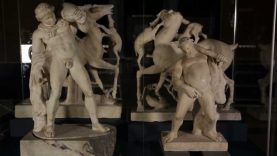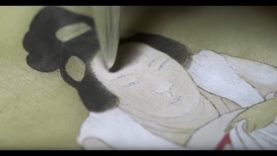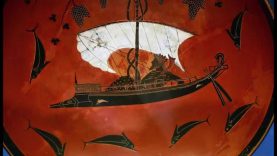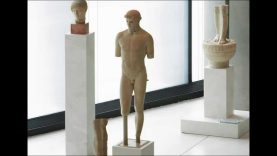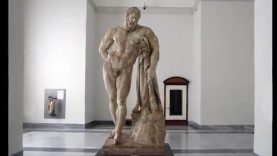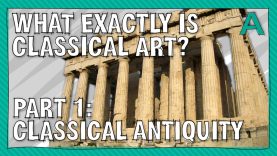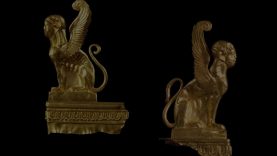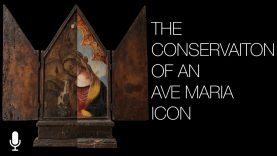ANCIENT GREEK SCULPTURE – Art History lesson
There are three main periods of Greek Sculpture; Archaic, Classical and Hellenistic. The Greeks were blessed with a large supply of marble, which was what they used most in their sculptures. Bronze was also used in their artistic work of humans. Many of the original sculptures were damaged or destroyed. Yet, many still survived because the Romans make copies or duplications of the original works.
The Archaic period was the earliest period in Greek Sculpture which started around 600 B.C. and lasted until 480 B.C. These works have a stiff and ridged appearance similar to that of the Egyptian sculpture.
The second period, the Classical period, was between the Archaic and Hellenistic times. The Classical period shows a very large shift from the stiff Archaic to a more realistic and sometimes idealistic portrayal of the human figure. Females, after the 5th century B.C., were depicted nude, often with flowing robes. The robes gave the sculpture the idea of movement and realism in an effort by the artist to show humans more realistically.
The third period, the Hellenistic period, started a little before 300 B.C. To the average person, it is more difficult to see the distinctions between the Classical and Hellenistic period. Both periods did the majority of their sculpture as nudes. The Greeks portrayed a young, vigorous, and athletic person in their works. These works idealized the individual and in a way, attempted to capture the idea of youth and strength in their design. The works reflect the commonly held views of youth, strength, and courage which were encouraged in the Greek City states.
A couple of interesting notes about the Greek sculpture. Greeks portrayed the gods in very similar fashion as they did the regular humans. There were no distinctions of size or body make up in their sculpture which would suggest that the gods where greater or more powerful then the humans. This is also similar in Greek stories, where the gods are shown to have very human characteristics, both good and bad.



